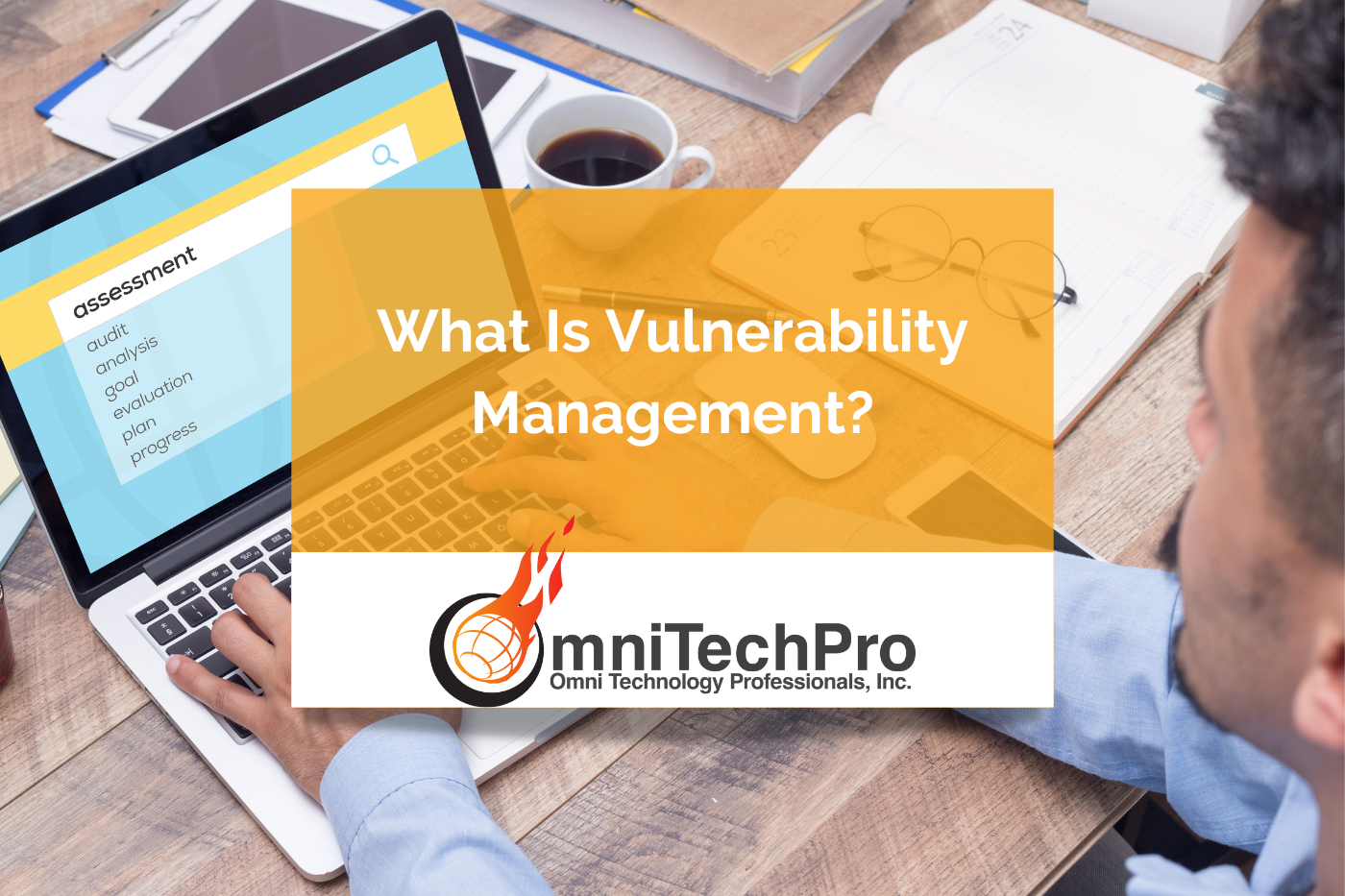Vulnerability management is a critical aspect of network security. It involves identifying, assessing, and prioritizing weaknesses in computer systems, applications, and networks to address them with appropriate countermeasures. This article will explain vulnerability management, provide an overview of the process and discuss its importance for organizations.
The importance of effective vulnerability management cannot be overstated; it helps organizations maintain strong cyber defense capabilities against ever-evolving threats. By understanding how different components interact in a system and proactively addressing identified issues before they become exploitable, businesses can better safeguard their data against external attacks while improving overall efficiency and reliability.
This type of proactive approach is essential for ensuring effective cybersecurity over the long term. Before beginning this journey, one should ask, what is the difference between vulnerability management and vulnerability assessment?
Vulnerability Management and Vulnerability Assessment are separate processes.
Vulnerability management and vulnerability assessment are two distinct processes. Vulnerability management is a continuous process that identifies, evaluates, and reduces the risk of potential vulnerabilities in an organization’s systems, networks, or applications. On the other hand, vulnerability assessment is a one-time analysis of existing security issues within a system or network. To better understand the difference between these two concepts:
- Vulnerability Management involves identifying, assessing, and reducing risks associated with discovered threats and vulnerabilities on an ongoing basis;
- Vulnerability Assessment is confined to analyzing existing security problems at a specific point in time;
- The goal of Vulnerability Management is to maintain up-to-date information about threats as well as any new weaknesses found during the course of operation;
- A Vulnerability Assessment aims to identify current security gaps before malicious actors can exploit them.
The key takeaway from this comparison is that while both processes involve scanning for known vulnerabilities and evaluating their impact on your environment, vulnerability management requires more frequent monitoring and updating than vulnerability assessment. It is an important part of an organization’s overall cybersecurity strategy because it provides visibility into potential areas where attackers may target, allowing them to take proactive steps towards securing their environments against those attacks. As such, it’s essential for businesses looking to protect themselves against emerging cyber threats to adopt effective vulnerability management practices.
4 Steps Of The Vulnerability Management Process
Vulnerability management is identifying, analyzing, and responding to threats posed by security vulnerabilities. This process includes vulnerability scanning, identification of vulnerabilities, risk assessment, patch management, and corrective action.
Vulnerability scanning is a key step in the vulnerability management process that involves automated techniques for evaluating risks posed by system vulnerabilities. This includes internal and external scans, which use software tools to scan computer networks for potential weaknesses or holes that attackers can exploit. By performing these scans regularly, organizations can identify any new vulnerabilities before they can be used against them.
Once identified, the next step is to assess the risk associated with each vulnerability found during the scan. Risk assessments should consider factors such as the criticality of assets affected by a particular threat and evaluate how likely it will be exploited by an attacker if left unpatched. Based on this analysis, appropriate actions must be taken to mitigate potential risks associated with each found vulnerability. Such measures could range from applying patches or other relevant fixes directly to taking necessary preventive measures such as disabling vulnerable services or discontinuing using certain applications altogether.
Finally, ongoing monitoring should be done after implementing patching and/or corrective action plans to ensure continued protection against newly discovered threats. Regularly reviewing all systems within an organization’s network environment ensures that no new weak points have been introduced over time due to changes in IT infrastructure or user activities. Transitioning into performing vulnerability scans allows organizations to detect emerging threats early on so they can take timely measures to address them appropriately.
1. Perform a Vulnerability Scan
Recent studies have found that approximately 80% of breaches are caused by unpatched vulnerabilities1. Performing vulnerability scans is a critical component in the overall security management process and helps to identify potential weaknesses or misconfigurations in an organization’s networks, devices, applications, and systems.
Vulnerability scanning involves running automated tools to detect certain software configurations that could lead to unresolved exploitable conditions. The scan results will give administrators a detailed report outlining which assets need further assessment or remediation. This allows organizations to prioritize their efforts so they can focus on resolving high-priority issues first.
Several types of vulnerability scans are available, including credentialed vs. non-credentialed scans, internal vs. external scans, and active vs. passive scans. Organizations need to understand the pros and cons of each type of scan before selecting one for use in their environment. To ensure all identified vulnerabilities are accurately addressed, it’s recommended that regular scanning be conducted at least once per quarter. Assessing vulnerability risk requires carefully considering the impact of each issue discovered during the scan process.
2. Assess the Vulnerability Risk
Vulnerability management is a process of assessing the risk associated with different vulnerabilities. It involves identifying and analyzing risks, followed by determining suitable solutions to manage those risks. Risk assessment is an important part of vulnerability management since it helps organizations understand their security posture, identify areas that need improvement, and prioritize resources accordingly.
Risk assessment begins with identifying threats or weaknesses in existing systems and networks. These can include external sources such as hackers, internal sources such as employees, and environmental factors such as weather conditions. After identifying potential risks, organizations use various risk analysis techniques to determine their severity level. Such techniques include asset valuation and impact analyses, which help organizations assess the financial cost of any given threat or weakness.
Organizations then develop appropriate vulnerability management solutions based on the results of the risk assessment process. Solutions may range from updating system configurations to implementing new policies or procedures to minimize exposure to identified threats or weaknesses. All solutions should be tailored according to each organization’s specific needs to reduce overall organizational risk levels effectively. By implementing these measures, companies can ensure greater protection against malicious actors while maintaining compliance with industry regulations.
An effective vulnerability management strategy requires regular monitoring and evaluation of current and future threats to address them before they cause damage or disrupt operations proactively. This will allow organizations to quickly adapt their security strategies when necessary and prioritize resources toward addressing high-risk vulnerabilities first. Through careful planning and execution of a comprehensive vulnerability management program, organizations can gain better visibility into network security issues while protecting themselves against attackers who seek to exploit vulnerable systems and applications.
3. Prioritize & Address Vulnerabilities
Vulnerability management helps to prioritize and address vulnerabilities. It involves risk assessment, patching security holes, and managing configurations to reduce attack surfaces. Vulnerability prioritization helps organizations determine which issues should be addressed first based on their severity or potential impact if exploited. It is important to understand the risk posed by each vulnerability to prioritize vulnerabilities.
Organizations can use a variety of methods for priority setting to identify threats that need immediate attention, such as:
- Risk Prioritization: Understanding the risks associated with each vulnerability and determining its relative importance so that resources are allocated accordingly.
- Address Vulnerabilities: Identifying ways to remediate discovered vulnerabilities, including mitigating through system configuration changes or implementing software patches where appropriate.
- Security Patching & Patch Management: Keep systems up-to-date with the latest security patches released by vendors and apply them correctly.
- System Hardening & Configuration Monitoring: Ensuring proper configuration settings are used across the environment and regularly monitoring them to detect misconfigurations or unauthorized changes.
By following these best practices, organizations can effectively manage their vulnerabilities while maintaining acceptable risk exposure within their networks. Properly implementing vulnerability management processes enables organizations to protect themselves against cyber attacks better and continuously monitor for new threats.
4. Continuous Vulnerability Management
Despite the efforts to identify and remediate vulnerabilities, they remain challenging for organizations. Thus, continuous vulnerability management is essential to stay ahead of cyber attackers. Continuous vulnerability monitoring involves implementing an effective strategy incorporating a patch management system, a threat intelligence platform, and a robust vulnerability remediation process.
A comprehensive vulnerability management strategy helps keep track of any changes made by the attacker or malicious users to take appropriate measures before it’s too late. It enables organizations to detect new threats that could harm their systems and networks before they become costly disasters. Patch management systems help mitigate security risks by ensuring timely updates are applied on all network devices, servers, desktops, virtual machines, and other equipment connected to the organization’s infrastructure. A threat intelligence platform provides real-time alerts about the latest vulnerabilities and allows administrators to prioritize them accordingly. Finally, a well-defined vulnerability remediation process ensures rapid deployment of security patches across an organization’s IT systems, effectively minimizing risk exposure from potential threats.
By leveraging these proactive methods of managing vulnerabilities, companies can ensure that their data assets are less likely to be compromised by external adversaries or internal threats posed by negligent employees, thus improving security posture. Stay ahead with continuous vulnerability monitoring instead of playing catch up after being breached; this will enable businesses to maintain compliance requirements while safeguarding critical information assets.
Continuous Vulnerability Monitoring
Vulnerability monitoring is an essential part of security management. It involves continuously analyzing and identifying potential weaknesses or vulnerabilities in a system’s infrastructure, applications, databases, and networks. This helps organizations avoid emerging threats by taking preventive measures to identify possible risks before they become major problems. Patch management is also important for ensuring timely updates when new vulnerabilities are discovered.
Threat intelligence can be gathered from various sources, such as public vulnerability reports, automated scans, penetration tests, and other external data providers. By consistently tracking these sources, organizations can spot newly identified vulnerabilities quickly and take appropriate actions to address them. Risk management should also include regular assessments of the system’s assets against known threats which can help determine their risk level based on their current configurations.
By combining all these elements into an effective vulnerability monitoring program, organizations will gain better visibility into the overall security posture of their systems while helping reduce the attack surface area that malicious actors may exploit. With this knowledge, they can proactively implement necessary controls while reducing their cyberattack exposure.
Conclusion
The importance of vulnerability management cannot be overstated. Properly implemented, it can significantly reduce the risk of cyber-attacks and other security risks while providing visibility into a company’s IT infrastructure. Vulnerability management is an ongoing process that requires organizations to continuously monitor their systems for vulnerabilities to identify potential threats before they become real issues. This helps ensure that new security weaknesses are identified quickly and appropriately addressed.
To illustrate this point, consider the story of a large retail organization monitoring its network for security vulnerabilities continuously using automated scanning tools and manual testing processes. When a zero-day exploit was released targeting one of their applications, the team could quickly respond with corrective action due to the proactive steps taken with vulnerability management practices. The timely response minimized the damage from what could have been a major breach.
Vulnerability management should not be treated as just another checklist item; instead, it should be considered an integral part of every organization’s security strategy. With regular assessment and monitoring efforts combined with strict patching policies applied throughout all layers of the IT infrastructure, organizations can stay ahead of attackers by staying vigilant against known vulnerabilities to protect valuable assets within their networks.
For questions on this and other security concerns, feel free to contact us for more information.




